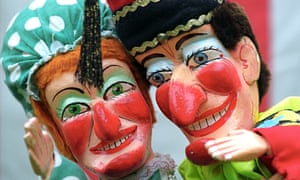- 也許今年可邀女性共舞,是千年來的突破。British Museum#MayDay is traditionally celebrated with Morris Dancing in some parts of the UK, as shown in this 18th century illustration by Charles Grignion. Dancers often wear bells around their ankles or knees, creating a jangly, jovial spectacle. This drawing was based on an ‘ancient window’ in a house in Staffordshire – now on display at the Victoria and Albert Museum.Discover more about how this festival has been celebrated over thousands of years: http://ow.ly/5mxK30bfLEK
Invented tradition - Wikipedia, the free encyclopedia
https://en.wikipedia.org/wiki/Invented_traditionHobsbawm "contrasts invented traditions with what he calls 'the strength and ... oftradition in colonial Africa," and Eric Hobsbawm's "Mass-producing traditions: ...
Home truths: five ‘English’ traditions that aren’t from England
From the WI to morris dancing to tennis – some of England’s most prized traditions and institutions originate overseas

English culture is the sum total of all the bits and pieces that have been borrowed, adapted and appropriated from other places and cultures, stitched together to form something different and distinctive. The result is that, when you try to define Englishness or try to defend some kind of pure Englishness (there is, of course, no such thing), the whole thing slips through your fingers.
Here are five institutions you might have thought were English but which actually originated elsewhere.
Morris dancing (Italian)
As with so many of the traditions that seem to be cornerstones of English life, it is difficult to trace the real origins of morris dancing. Some sources suggest it arrived in England via Italian dancers during the renaissance. Others contend that the word originally derived from “Moorish”, adopted at a time when Moorish decorations were suddenly fashionable. Even if the morris dancers were dramatising an English tradition, therefore, the bells on their ankles may have made them seem exotically foreign. It’s a mystery, but not a wholly English one.
Pigeon racing (Belgian)
Pigeon racing first attracted attention during the siege of Paris in 1870-71. The English that were present watched entranced as French pigeons carried more than a million messages to and from the city, crossing Prussian lines. But the sport of racing pigeons was developed by the Belgians, and it was only when the king of Belgium, Leopold II, gave the British royal family breeding stock that the sport took off in Britain. The first race was held there in 1881, inspired by the Belgians who would start their races in the south of England.
Punch and Judy (Italian)
Mr Punch is Italian. He derives from the commedia dell’arte and the Italian Renaissance, a direct descendent of the character Pulcinella; the show owes much to the presence of itinerant Italian players in London during the 16th century. When Samuel Pepys saw his first Punch and Judy show in Covent Garden on 9 May 1662, performed by an Italian puppeteer called Pietro Gimonde, he described it as “an Italian puppet show”.
The Women’s Institute (Canadian and a bit Welsh)
The WI began in Canada. To be precise, it was formed in 1897 in Stoney Creek, Ontario by Adelaide Hoodless, after she gave a talk at the Farmers’ Institute about domestic science and agriculture. Even when, in 1915, the movement arrived in the UK, its first branch wasn’t in England but in Llanfairpwllgwyngyll, Anglesley, where it was set up to encourage more women to get involved in food production.
Tennis (Basque, Welsh and English)
Around 1859, a Birmingham solicitor called Harry Gem and his Spanish friend Augurio Perara combined the best of rackets with the best of pelota – a Basque ball game – to create tennis. They played it on the croquet lawn at Edgbaston. When they moved to Leamington Spa in 1872, they took the game with them and founded the world’s first tennis club. The following year, Walter Wingfield, a Welsh inventor and army officer, patented a similar game which he called stické, borrowing from the Greek word sphairistiké (meaning “the art of playing ball”) and from the rules of real tennis. The two were combined, creating the game that is now played at Wimbledon and around the world.
There is no evidence that beer is anything other than English, though tea (China) and marmalade (Portuguese and other nationalities) come from overseas. As for King Arthur (partly French, partly Welsh) and Henry V (very Welsh), don’t get me started. And don’t mention bungalows (Indian), or umbrellas (French), or Christmas trees (German) …
What the English can’t do is to complain that “foreignness” begins at Calais, or that borders should be put up to protect English culture from foreign influences. Those influences, to a large degree, are English culture.
• David Boyle’s How to Be English is published by Square Peg.

沒有留言:
張貼留言